If you’ve been in the market for a deep-cycle lithium battery, you may have had a bit of sticker shock in seeing prices ranging from $700 to over $1000 for a 100 amp hour (Ah) battery. It’s a big investment, especially if you’re building out a solar setup for recreational vehicles (RV) that requires multiple batteries or upgrading your RV house battery to this newer, more reliable technology.
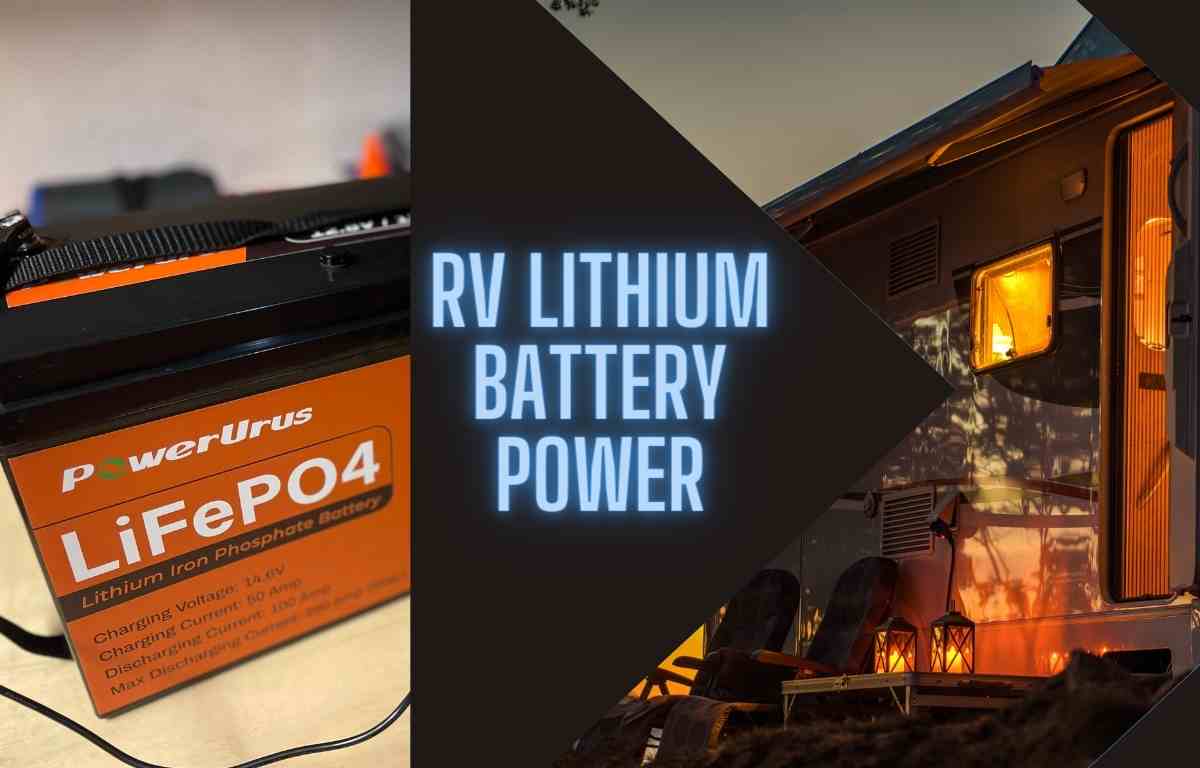
However, can you buy a well-built, feature-rich lithium battery, equally as reliable as some of the popular brands? We’ve recently reviewed the PowerUrsus 100Ah lithium iron phosphate battery (LiFiPo4) and found that it packs quite a punch, both in capacity and features, at a very approachable price point. So let’s take a closer look at what we found.
About Lithium-ion Batteries
If you don’t need to learn more about lithium batteries and are here for the PowerUrsus review, feel free to skip ahead to the review section.
Before we jump into the heart of the review, it’s important to understand a little more about a lithium Battery as compared to the standard lead-acid battery we’re all familiar with. While most of us use lithium battery technology every day, most prominently in our cell phones, lead acid batteries are still the most common deep cycle battery we find in our RVs, trolling motors, etc. There have been some advancements in lead acid battery technology, such as the introduction of AGM batteries and Gel Batteries, but they all function similarly. However, the lithium battery revolution is gaining traction as many people see the benefit of upgrading to this newer technology.
While a standard lead-acid battery uses lead plates and an electrolyte solution to maintain a charge, a lithium battery uses a new technology. This technology powers most consumer electronics, including the phone you might be using to read this article. The most common type of deep cycle lithium-Ion battery uses a Lithium Iron Phosphate (LiFePo4) chemistry. In these batteries, energy is stored in a lithium-ion phosphate solution rather than an electrolyte solution in traditional lead-acid batteries.
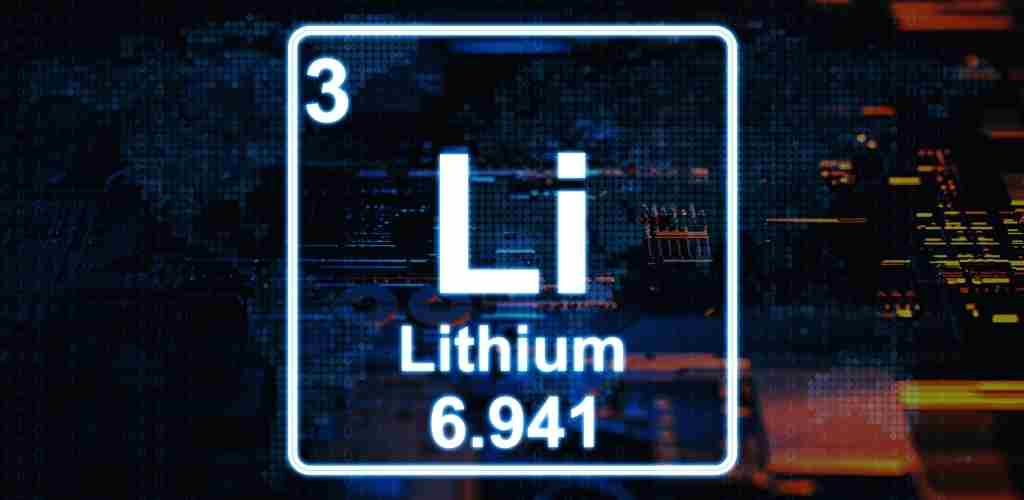
Since most of the weight of a traditional battery is due to the lead plates, a lithium battery will be much lighter. In addition, lithium batteries rely on inorganic phosphates, making them one of the safest and most fire-resistant batteries on the market, which is a good thing since most of us keep them in our pockets all day long.
One difference of a lithium battery is that it doesn’t give you a lot of warning before it dies. A Lithium battery will usually work until it doesn’t. While standard batteries may produce the telltale signs of a dying battery- lights dim, starting is sluggish, etc., a Lithium battery may seem fine one minute and then go completely dead the next. While it may sound like a negative, it means you’re using more of the battery capacity for a longer period of time (an overall plus), making them a great option for RV use.
Lithium batteries benefit from a deep discharge, meaning you can utilize most of the energy stored in the battery without damaging it. Because of this, combined with their fast-charging capabilities, safety features, lighter weight, and reliability, lithium batteries are a much better solution for applications required by RV owners, charging via solar panels, and uses that require a constant and steady power supply.
Lithium Batteries are Smart Batteries
Lithium batteries offer many benefits in delivering electricity, but they also have advanced controls for how they charge and store electricity. Since lithium batteries are more advanced and have unique charging parameters, most good ones have a robust built-in battery management system (BMS). The BMS is essentially the battery’s brain, managing each cell’s charge and discharge rates. A good BMS will also monitor other parameters, such as temperature, ensuring the battery will only charge when the conditions are adequate. This component will prevent damage to the battery if charged in extreme temperatures (cold and hot).
A well-built lithium battery will come with a well-designed and reliable BMS. Unfortunately, some less expensive lithium batteries will forgo this requirement or have a less-than-ideal system in place. So, when reviewing a battery, it’s critical to focus on the BMS and the cell structure. The good news is that a well-built and designed battery will ensure that everything is designed to work together.
Lithium Battery Charging
Lithium batteries charge differently than a standard lead acid batteries. If you have an old analog charger sitting in your garage, it may charge the battery, but it’s not going to do it efficiently and can actually damage the battery. Luckily, newer digital chargers are equally as smart as lithium batteries. Many will have a setting for lithium batteries, which provides a different type of voltage pattern optimized for lithium batteries.
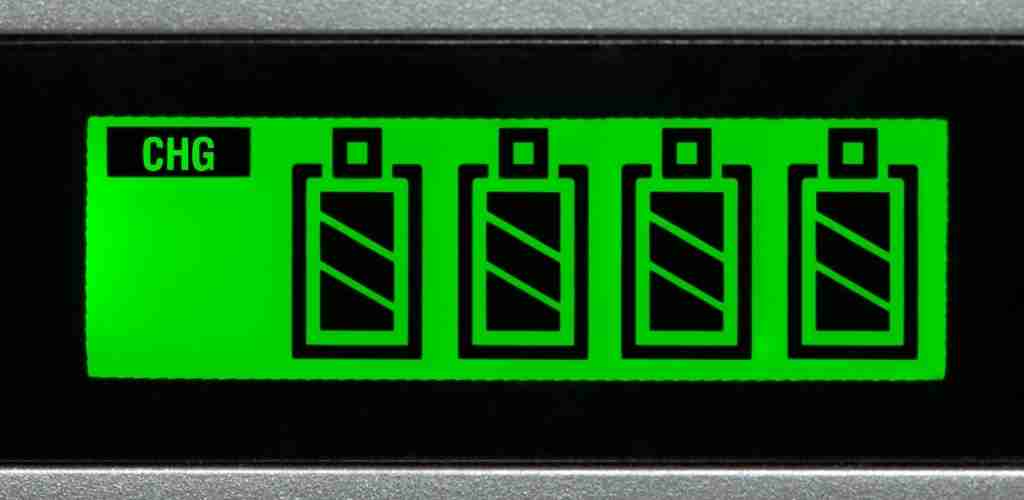
If you spend money on a lithium battery, it’s advisable to upgrade your charger if it’s not designed for lithium cells. Likewise, if you rely on the charger in your RV when connected to shore power, ensure it’s capable of charging lithium batteries. Most newer RVs will be fine and be a drop-in replacement, but it’s important to check before you upgrade.
Lithium batteries are also the choice of individuals building a solar power system. While we won’t get into the details in this article, it’s important to note that your choice of battery is one of the most important components of harnessing and storing solar energy. In addition to a battery bank, you will need a solar charge controller, inverter, solar array, and of course, sunlight.
Benefits of Lithium Batteries
Lithium Batteries offer many benefits over a standard lead acid battery. First, they are very reliable and can be trusted to provide constant clean power to your devices. While they are more expensive, they ultimately have a lower system lifetime cost than any other battery chemistry available today. A lithium battery can last up to 10 times longer than a lead acid battery. That’s a long time, especially when boondocking or camping off the grid.
Lithium batteries are also lighter and can be smaller. While this may not be a huge selling point for a single battery in your RV, it can make a big difference if you design large solar systems in your rig. Lithium batteries are also sealed and can be safely used indoors, unlike lead-acid batteries.
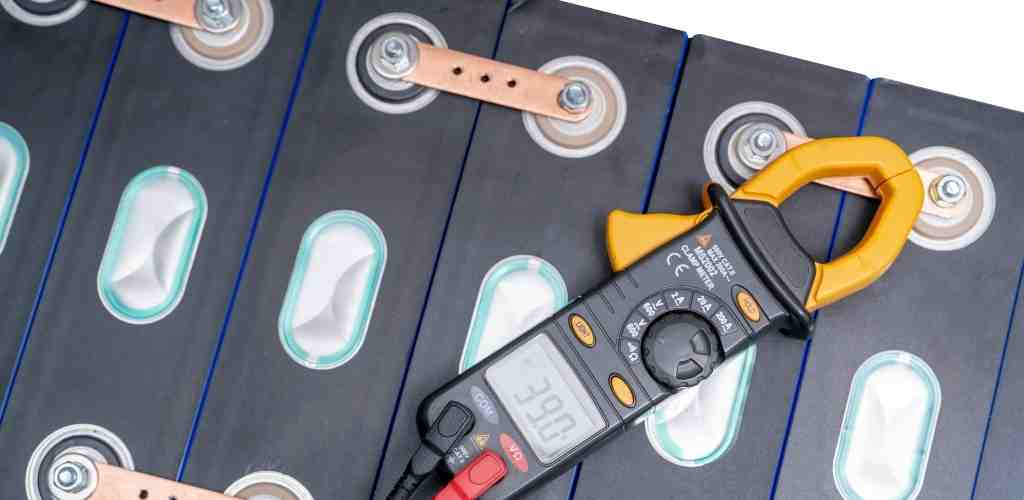
One of the greatest benefits of a lithium Battery is the significant improvement you gain in discharge and charging efficiency. Lithium batteries can charge much faster than lead-acid batteries and can be discharged to a low state while still receiving constant power. This benefit not only adds reliability but can also protect the devices that are using electricity from the battery. Additionally, since you can use more of the stored energy in a lithium battery, you will have more usable capacity than the available lead-acid counterparts. This added capacity is one of the primary factors for choosing lithium-ion batteries.
In addition to a long run time, lithium ion batteries also have a long life. A typical cycle life of a quality lithium battery is over 3,000 discharge and recharge cycles. After this, the total capacity may diminish, but for most users, this is well over a 10-year lifespan if you were to drain it completely every day. So compared to lead acid batteries, these are the best choice if you’re looking for a long term battery system solution.
Negatives of lithium batteries
While it’s easy to point out the many benefits of lithium batteries, there are a few caveats. The first notable one is that lithium batteries can be very expensive when matched up against a similar-capacity lead acid battery. You can easily pay 5 to 10 times the cost of a lead acid battery to upgrade to lithium.
Lithium batteries are also prone to damage from overcharging, so it’s important to have a quality BMS built into them. If you opt for a battery that’s not built well, you can end up with a very expensive paperweight.
Choosing a Deep Cycle Lithium Ion Battery
Battery Size:
One of the first decisions you’ll need to make when searching for a lithium battery is its size/capacity. For this, you’ll want to be looking at Amp Hours (Ah). A battery Ah rating will tell you how much amperage can be provided by the battery for one hour. So, a typical 100Ah battery can supply 100 amps for one hour or one amp for 100 hours. While it may seem a little confusing at first, it’s important to understand how battery capacity works so you can determine how much energy you need.
While I won’t go into many details in this article, we will look at one example to give you an idea of how it works. Most electronic devices measure their electricity usage in Watts. So, to measure this against a battery Ah, you need to do a simple conversion. All you need to do is multiply the battery voltage by the Ah rating. For example, if you have a common 12V 100Ah battery, multiply 12 x 100 to get the Watt Hours. You now know that you have a battery supplying 1200 Watts of electricity per hour.
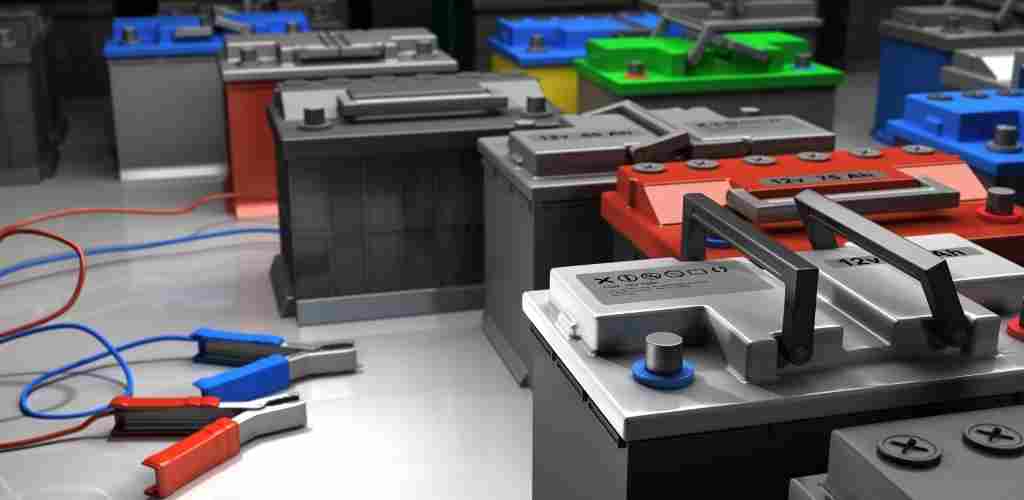
Next, let’s look at a common device you may use in your RV- a television. A typical 40-inch HDTV will use about 230 Watts of electricity per hour. Your 100Ah 12V battery, as determined from the previous calculation, has a 1200Wh rating. So, if you take 1,200Wh and divide it by the TV usage (1200Wh/230W), you can estimate that you can run your TV for 5.2 hours before you exhaust your battery. Likewise, a 200Ah battery will provide 10.4 hours of watch time.
Be aware that these numbers are fairly basic. Many different conditions can impact your use. For example, some devices use varying levels of electricity. Also, some batteries can’t use all of the energy stored in the cells. For example, a Lead Acid Battery may only be capable of discharging to 50% of its capacity, so you need to cut that number in half. The great thing about lithium batteries, which makes them so attractive, is that they can be discharged close to 0%, meaning you can get a lot more juice out of them.
So, when selecting your battery capacity, it’s best to consider your usage needs first. For example, if you plan to live off the grid for several days and use a lot of electricity, you likely want a larger Ah battery or may want to run several of them in parallel. This setup is especially true if you’re planning to build a system that can power your RV’s air conditioner.
For this review, we’re testing a 100Ah battery, one of the most common sizes in RVs.
Battery Manufacturer:
When making such a big investment in a battery, it can be a little confusing to ensure you’re selecting a good-quality battery. If you search on Amazon, you will find dozens of deep-cycle lithium batteries with few reviews, varying prices, and sporadic documentation on the battery components. Even worse, it’s nearly impossible to determine the quality of the components used to build the battery.
On the opposite spectrum, if you do a deep dive into finding well-reviewed and quality batteries, you’ll likely be shocked by the sticker price and wonder if paying $800 for a single battery is worth it. Luckily, if you want to buy the best of the best and are willing to pay for it, you can be certain you’re getting a quality battery.
The challenge exists when you’re looking for something in the middle of the road that is reliable, built with good components, and affordable. This class is where the PowerUrsus thrives.
Honestly, I had never heard of PowerUrsus until they reached out to us asking us to review their battery. However, after receiving it, testing it, and doing some additional research on the build quality, we can confidently say that this appears to be a great battery for the price. So, let’s dive into the review.
PowerUrsus 100Ah Battery Review
| Category | Battery Specs |
|---|---|
| Battery Size: | 12V |
| Model #: | S12100A |
| Capacity: | 100Ah, 1280 Wh |
| Lifecycles: | Greater than 3500 @ 80%DOD |
| BMS Board: | Internal |
| BMS rating: | 100A BMS |
Design, Housing, and Appearance
The most important part of the battery is under the hood, which makes selecting a quality battery challenging. However, poor housing assembly often indicates that the rest of the battery has much to be desired. Nevertheless, it has a nice lightweight design built around four battery cells.
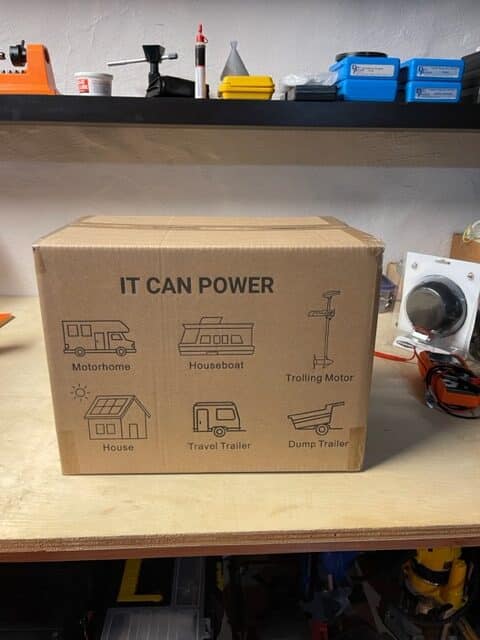

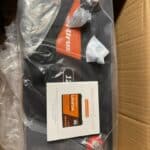

The PowerUrsus housing is fairly basic, but it’s assembled well. This shortfall is probably the one thing I would suggest the manufacturer upgrades. Many lower-cost lithium batteries use a similar case with a different sticker. Unless you tear down the battery, it’s hard to differentiate between some of them. The standard black/orange case does not scream quality, but remember, it’s important not to judge a book by its cover.
In researching the battery, we found someone who tore apart the battery to get to the components and BMS. As a result, we learned that this is a well-built battery with good components packaged in a mediocre case. This fact is good news for this battery. However, PowerUrsus should consider upgrading the case to stand out from the poorly designed batteries using the same one. With that being said, rest assured that this battery is well-built, and the case is solid and provides good protection for the battery. This is more of an aesthetic suggestion.
Weight and Dimensions
| Specification | Details |
|---|---|
| Weight | 27.55 lbs |
| Cells | 4 cells (Grade a Prismatic Cell) |
| Terminals | Standard M8 (12mm) |
| Dimensions | 12.99×6.81×8.46 inches |
| Waterproof Rating | IP65 |
Battery Management System (BMS)
As mentioned above, a lithium battery is not very reliable without a quality BMS. Luckily, the PowerUrsus battery offers a well-designed and capable one. Below are some of the protections offered by the built-in BMS.
Temperature Protection
A must-have feature in a deep-cycle battery is temperature protection. This feature is even more relevant in a lithium battery since charging a battery that is too cold or hot can damage it. The PowerUrsus battery has both a low and high-temperature sensor, preventing charging if it’s below freezing or hotter than 155 degrees F.
This safety feature is important for applications like an RV if you plan to use the RV in the winter. Without this protection, you could permanently damage your battery if you attempted to charge it on an extremely cold winter day.
| Protections | Temperature Rating |
|---|---|
| Operating Temp for Charging | 32-155 F |
| Operating Temp Discharge | -4 to 131 F |
| Operating Temp Storage | -4 to 131 F |
Output Overvoltage Protection
The battery has a recommended discharge voltage of 10.8V to 12.4V, which will bode well for almost any application. However, if you have a situation where you experience a voltage spike, the battery will shut down the supply to prevent damage to the battery.
Overcharge Protection
While most quality chargers will monitor the battery’s charge and prevent damage from overcharging, having onboard overcharge protection is a good idea in the BMS. If you accidentally selected the wrong setting on your charger or used an old one not designed for lithium batteries, the onboard protection will prevent damage to the battery. Since overcharging is one thing that can damage the battery, I like to have redundancy for overcharging protection built into the charger and battery.
Output Overcurrent Protection
Another important protection feature of the BMS is its protection against overcurrent discharge. An unintended excess draw of current from a device can be dangerous, as the heat generated by the flow of electricity can be enough to start a fire. In addition, if you have a failing device or component in your electrical system, the battery will stop providing power if it senses a higher-than-normal current draw.
Short Circuit Protection
Similar to overcurrent protection, a short circuit protection component will provide instant shutoff within 1 microsecond if it senses a large discharge, often a telltale sign of short circuits.
Over-Discharge Protection
While lithium deep cycle batteries can be drained close to zero, there is still a discharge threshold that you should avoid to preserve the life of a battery. You don’t need to worry about monitoring the battery discharge 24/7 because the over-discharge protection will cut off power when it gets critically low.
Using the batteries in Series
Like most LiFePo4 batteries, this one can be run in a series, allowing you to maximize a battery bank build for use cases like a solar power setup. You can connect a maximum of 4 100Ah batteries for a total of 400Ah. If you want or need to go bigger, you may want to upgrade to a 24, 36, or even 48-volt system. However, with the larger capacity comes a bigger expense.
Bluetooth Function
Unless you knew ahead of time that the battery connected via Bluetooth to an app, you wouldn’t know this by the documentation provided. At least in the test unit we received, there wasn’t anything in the box that mentioned the Bluetooth App. However, I already knew this was a feature, so when searching on their website, I found the link to download the app.


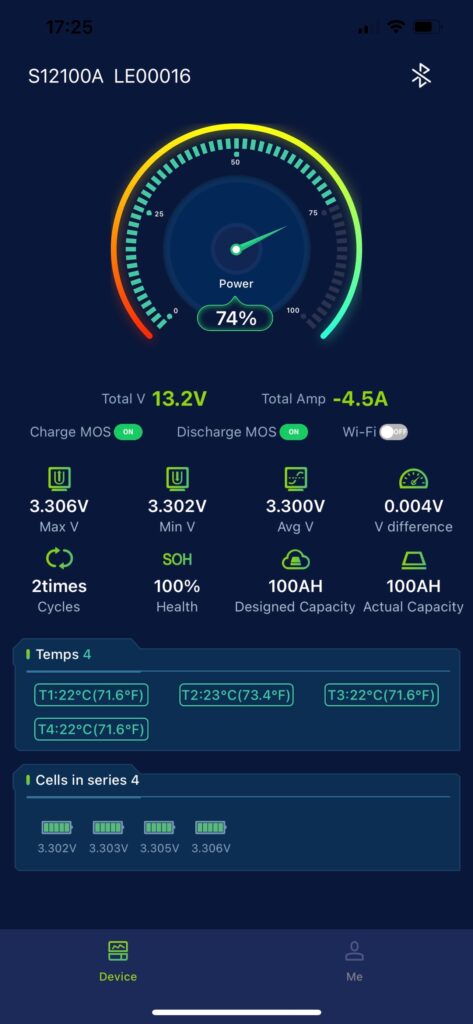
Connecting the battery via the Bluetooth controller was simple. All you have to do is search for the battery in your Bluetooth control panel, connect and open the app, and enter the name of the battery. The app is pretty simple, with no frills or bloated features. However, it worked great and provided all of the basic information we needed, such as battery capacity, charge status, life cycle usage, and battery health.
The Bluetooth signal on the battery was surprisingly strong. The test was conducted in the basement, but we connected to the battery on the second floor of the house. Seeing the capacity of the battery throughout the day-long test was very convenient. I expect the same will be true if you’re using it in your RV and curious about the state of charge of your battery. You won’t need to head outside with a volt meter to check on it.
Testing the PowerUrsus 100Ah Lithium Ion Battery:
TEST 1: Charging Test
The first test we conducted was the charging time for the battery. The battery ships with around a 30% charge, but you’ll need to fully charge it before use. Using a 3.0 Amp battery charger supplied by PowerUrsus, the battery took about 23 hours to charge fully.
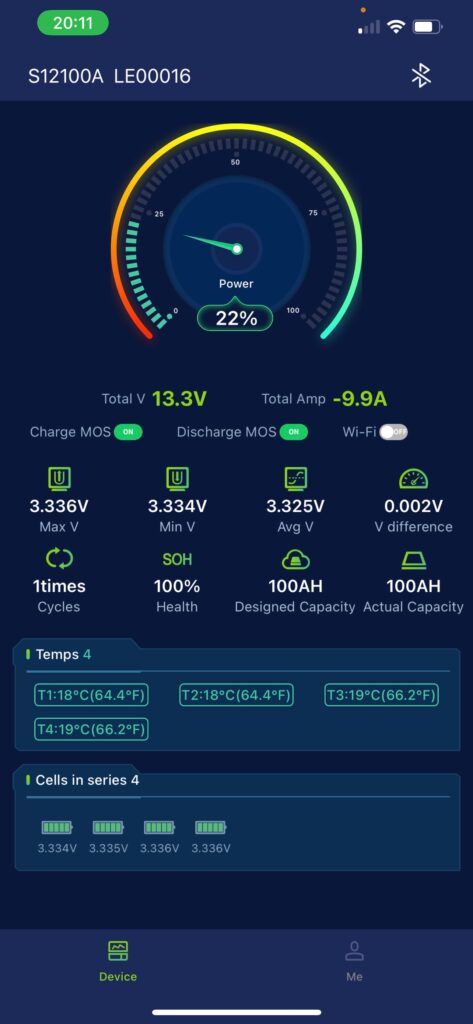

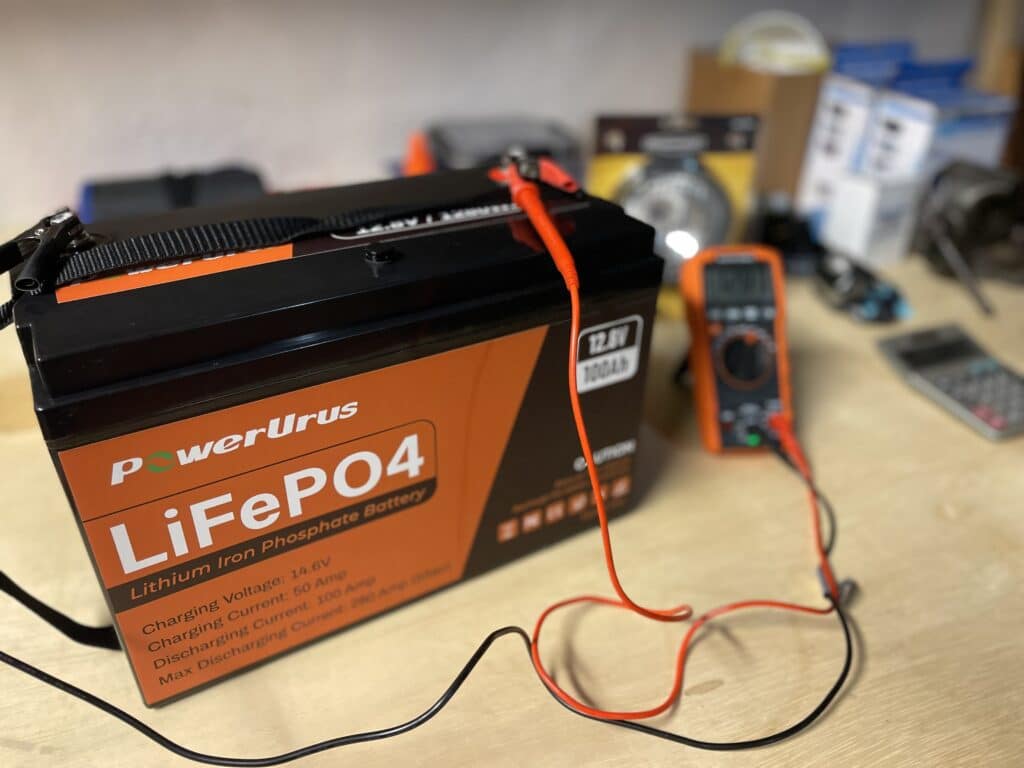
Following the test, we also charged it with a 10A charger, which, as expected, reduced the charging time significantly. It took about 10 hours to charge the battery from a fully drained state. The battery has a good charging management system that functions as it should.
Test 2: Battery Drain
With a fully charged battery, we ran a simple battery drain test. To accomplish this, we used a 55-watt Halogen lightbulb, similar to a car’s headlight. When doing the math, we determined that the light should draw about 4.58 amps. The convenient Bluetooth interface confirmed what we already knew when the load was applied to the battery.
With a 100Ah battery, the theoretical capacity should power this light for 21.8 hours. However, the designed capacity vs. the actual capacity of a battery is rarely exact. On the Bluetooth interface, PowerUrsus shows a designed and actual capacity of 100Ah, so the runtime should be pretty close for this new battery.
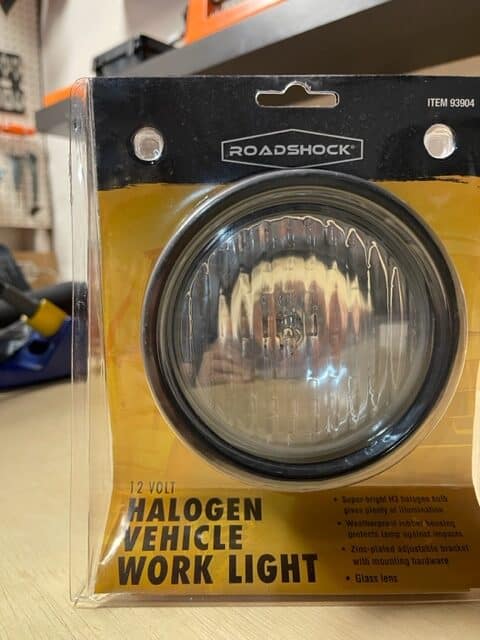
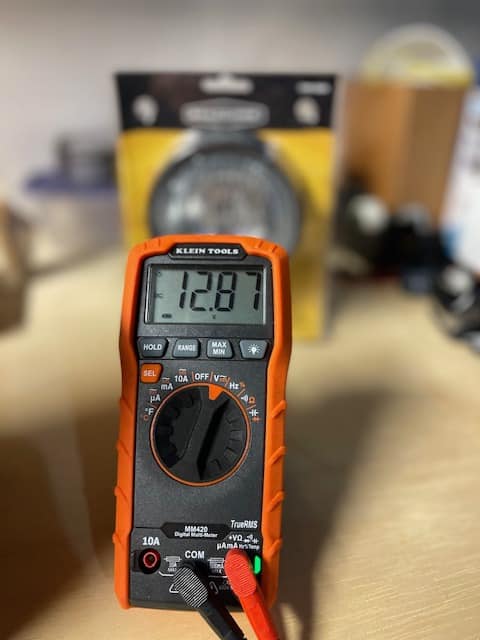
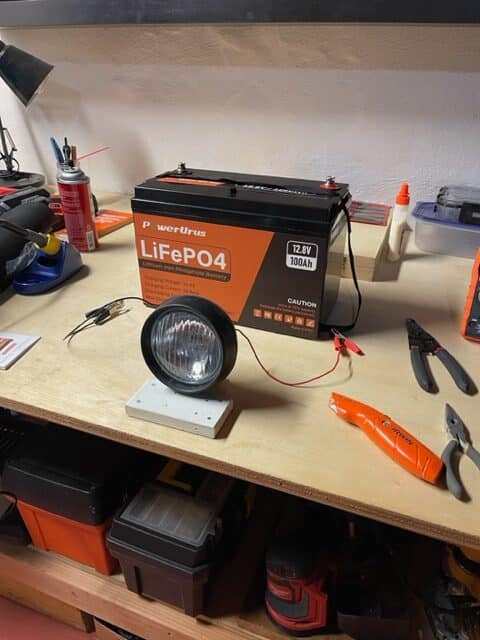

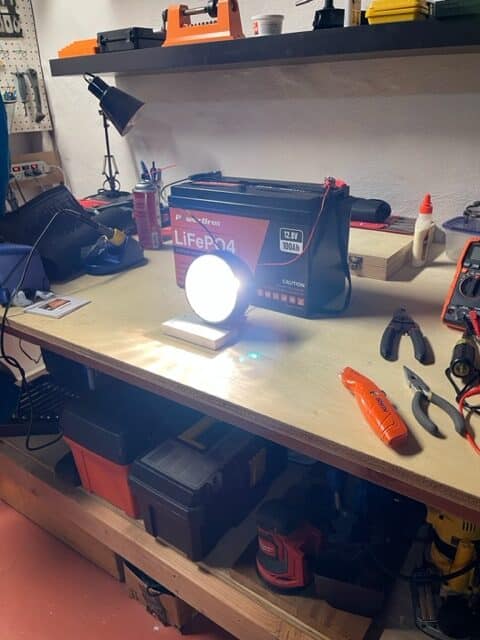
The test was operated at room temperature, providing a normal operating environment. With the fully charged battery, we connected the light with a simple 12v wire connection to both the positive and negative posts of the battery. We turned on the light, started the timer, and set up a nest camera to see when it cut out.
About 16 hours into the test, the inexpensive halogen light burned out. There was still 16 percent remaining on the battery, so we headed back out to Harbor Freight and picked up a replacement light. We connected everything and resumed the test.
However, after some head-scratching, we realized the new light was only pulling 4.1 amps as opposed to 4.5 amps of the previous one (9% less). It was the same exact light we used before, so we don’t know why it was pulling less amperage.
For the test to remain consistent, we needed to add an additional 36 minutes to the anticipated results. The new benchmark was now 23 hours.
Time-lapse of Battery Drain Test
We continued to let the light run until the battery was completely drained. We are happy to report that the battery lasted exactly 23 hours and 50 minutes. This exceeded the maximum time we anticipated the battery would last by nearly an hour. If the test came back anywhere between 22 and 23 hours, we would have been happy with the results. Instead, we were extremely impressed.
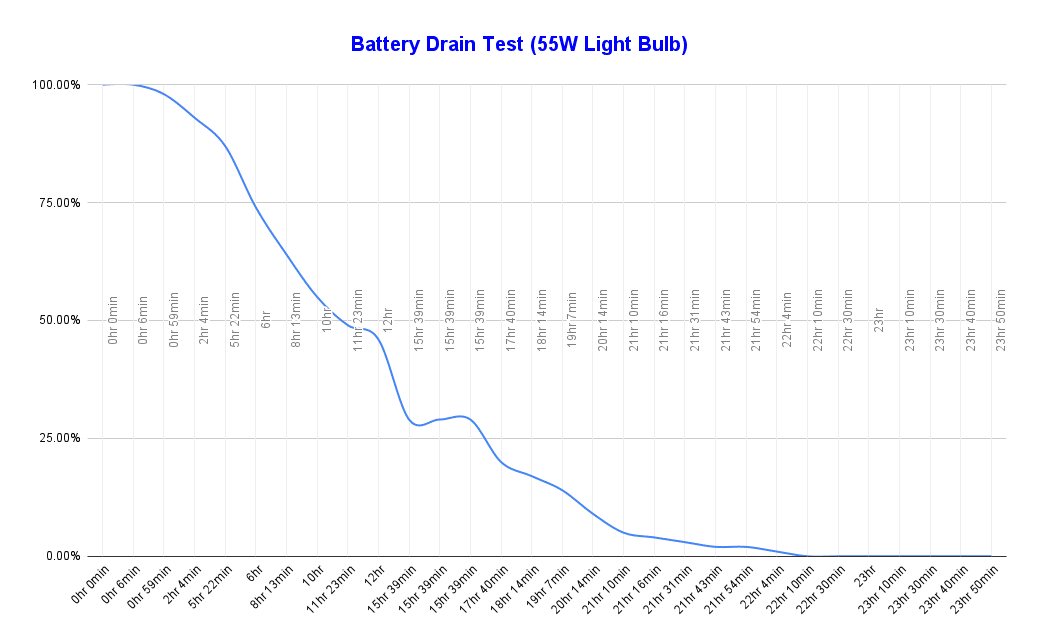
This runtime exceeded the expected results, meaning their advertised Ah ratings were spot on. This result is what we wanted to see from this controlled test, and we can confidently say that the battery delivers what it advertises.
Another interesting thing we noticed after fulling draining the battery was that the Bluetooth still worked. We were able to connect to the battery, fully exhausted, and see the information about the battery in the app. The app was displaying just under 12V, but the voltage meter was showing a low voltage, just above 4. We’re not 100% sure, but this may be the over-discharge protector kicking in, preventing an additional draw on the battery but displaying enough to run the Bluetooth and BMS features.
After the test, we put the battery back on the charger and got it ready for some additional work.
Test 3: Temperature Cut-Off Test
Since many people use their RV lithium batteries in low-temperature conditions, we wanted to test the BMS low-temperature cut-off for charging. To simulate cold temperatures, we took advantage of a deep freezer. While unconventional, the freezer provided good control of just under 0 degrees Fahrenheit and simulated the type of cold weather an RVer may experience dry camping in the Northeast in the heart of winter.

The battery has an operating temperature for discharge of -4 to 131 degrees Fahrenheit. However, it has a cut-off for charging of 32 degrees, meaning that the battery can still operate below freezing but won’t charge until the temperature is above freezing.
After keeping the battery in the freezer overnight and sufficiently cooling it to 0 degrees, we confirmed that it restricted charging until the battery was above freezing. Unfortunately, we didn’t test the high-temperature limit, which is good up until 155 degrees Fahrenheit, on paper.
We’re confident in the temperature limits stated by the manufacturer and feel that this is what makes this battery a good value. It’s important to have confidence in the battery’s internal BMS.
Longevity of the battery?
Unfortunately, this is something that we can’t test, but we will update this review over time as we continue to put the battery through some real-world testing. Nothing is causing us to believe that the battery will not last a long time and function as advertised. The battery has a greater than 3500 @ 80% depth of discharge (DOD) rating. This spec means that, at a minimum, you can run through a minimum of 3,500 discharge cycles, down to 80% of the battery’s capacity, before your battery shows diminished storage.
Suppose you use your battery daily, completely discharging and charging your battery every 24 hours. In that case, the battery will last a minimum of 10 years before measurable degradation (that’s a lot of life cycles). Most people will never use the battery this hard. This rating is in line with similar batteries that you find at higher price points. The long-term use of this battery should be very good, especially if you take good care of it. As a plus, while we didn’t have any issues with the battery, communicating with PowerUrsus was very quick and is hopefully a sign of good customer service. I believe it is!
Conclusion:
The PowerUrsus 100Ah lithium battery is well-built and feature-rich. While it may not have the branding of some of the larger battery manufacturers, it holds its own with some of the best ones on the market. In addition, the manufacturer uses quality components, the first signal suggesting a high-quality build.
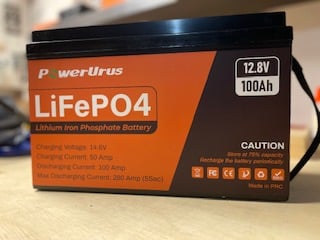
Connecting to the battery via Bluetooth is a nice feature and allows you to see how the battery operates when discharging or charging. The BMS has all the right features you would want in this battery style, and from what we can tell, it works flawlessly.
The one negative about the battery is the case. It uses a standard housing found in some of the lower-quality batteries. I’m assuming this is a cost-saving option for the manufacturer, as using a standard case probably saves some money on the build. For this reason, it’s a good idea to purchase this battery directly from the manufacturer, which can help ensure your getting the original battery and not a lesser-built one that looks similar. With that being said, there isn’t anything wrong with the case, and it’s assembled very well. A different look would just help it stand out as a premium battery, which it appears to be. Remember, the heart of the battery is the stuff you can’t see, so it’s important to ensure you order the correct one.
The area where this battery excels is affordability. At about half the cost of some of the larger names in the industry, you’re getting a quality product that will run head-to-head with the more expensive competition (ever heard of Battle Born LiFePo batteries). It’s not the least expensive one you’ll find on the market, but it’s probably the most affordable one that invokes confidence in it doing what it advertises. If PowerUrsus continues to produce quality products like this one, they should have a long future ahead of them. In conclusion, we feel that the PowerUrsus 100 Ah LiFePo option is one of the best lithium RV batteries on the market, especially when factoring in its affordable cost.
Don’t forget to use your PowerUrus Coupon Code when ordering to Save $15: M15
What’s next? Well, we were so impressed with the battery that we want to give it some additional testing at our off-the-grid cabin in North Central Pennsylvania. We have future plans to build out a solar power system there, and we’d love to test some of these batteries in parallel and give it a higher demand test with some real-world applications. If you want to see more, feel free to check back for some future updates.

